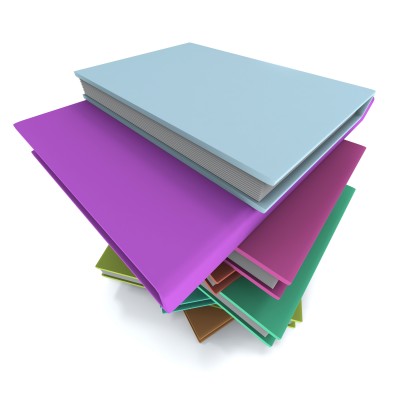I hope you find my writing and business tips and observations useful. My business and blog are dedicated to helping businesses communicate clearly and reach their potential.
Read, subscribe to my newsletter, enjoy!Tash
Sticking to instructions
Trying something new is always challenging and a bit nerve wrecking.
So it’s easy to rely on sources of information to help the process.
Making tile adhesive
We are doing up our bathroom so needed adhesive to attach the tiles to the bathroom walls. After research, we decided to use adhesive powder rather than a pre-mixed adhesive.
To make the adhesive, it is a simple matter of mixing some of the powder with water. Of course, how much of each is somewhat important!
The packet included instructions for making the adhesive to the correct consistency. However, the instructions were to mix 20 kg with 6 litres of water.
Trying to convert those instructions into mixing usable quantities was difficult – giving a weight rather than volume of the powder was particularly difficult. Meaning our first attempt was too wet and wasn’t going to hold the tiles well enough.
Clarity in instructions
We figured out a good consistency for the adhesive, eventually, and now have some lovely tiles stuck to our walls!
But learning from others’ mistakes, here are my tips for making instructions for useful:
- Remember who the instructions are for and make them suit. That is, don’t assume the person reading the instructions knows as much about your product as you do. If you are only writing for experienced people (in our case, professional tilers), you may be able to give less information than if writing for inexperienced users (such as DIY tilers).
If you have more than one audience, ensure the instructions are simple enough for the less experienced group. - Aim for clarity so people understand how to use your instructions. You can do this through
- avoid jargon
- do multiple small steps instead of a few large steps
- use short sentences
- use simple language and sentence structure
- if the product has different uses, explain how instructions vary between those uses. For example, if floor and wall tiles need adhesive with different consistencies, say something like “Add 6 litres of water for floor tiling and 5 litres for wall tiling” rather than “depending on the consistency of the mix required”.
- Where measurements may vary, give a ratio or multiple examples. I’ll expand on that in my next post 🙂
- Put instructions where they are easily seen – not just so they can be found but so that they are easy to refer to whilst using them. Again, with the tile adhesive packet, the mixing instructions were in amongst paragraphs of text.
What interesting experiences have you had with hard to understand instructions?
A manual by any other name…
It’s an officious sounding word for many people, and certainly a daunting prospect if you have to write or update the manual for your business. So much so, that people often avoid having a procedures or operations manual or just call it something less intimidating.
Which raises the first question – what is a manual?
Really it is just a collection of ideas and instructions to help operate something efficiently. It may be boring to read the manual that came with your new iPod, phone or TV but it is very handy when you can’t figure out how to set it up or use the advanced features.
Manuals range from a few pages long to hundreds and even thousands of pages long, depending on the purpose of the manual. Obviously the manual to run a multi-million dollar business will be longer than the manual for your home printer, but the concept is the same.
Here are a few tips to make the concept of a manual less intimidating in your business:
- call it something other than a manual if the name has negative associations for you – options include guidelines, procedures, rules, ‘helpful information’, policies and the ‘how to book’
- make sure to write it (or get it written) in simple terms so it’s easy to understand
- present it in an accessible way – a heavy folder stored on a high shelf will be ignored but a shared computer file on your intranet is much easier to use
- divide the manual into usable chunks – much better to have a long index than instructions that go for pages and cover many tasks
If you are starting a new manual from scratch, you have the advantage of making it friendly from the start, and preparing procedures and style guides doesn’t have to be frightening either!
Thinking about manuals you’ve had to use in the past, what were some of the big issues with them?
Important information comes first…
Leading up to Christmas, we put together a sand pit for my son (and eventually his baby sister) as one of his gifts. Sounds simple enough, doesn’t it?
I was very happy to see that all of the pieces were numbered so I didn’t have to figure out which piece went where, and the instructions (mostly in pictorial form) seemed simple enough to follow. However, it wasn’t always clear that each piece of wood had an up or down side so I had to undo and re-screw some bits.
Worst of all, though, was the fact that the kits came with screws of two lengths and it was only in step 8 of 9 that there was any mention of this. Continue reading
Telling the tale…
I’ve heard of a fun way to write a story and find a lot of new blogs. It’s as simple as each person writing one sentence and building the story as we go – and there will be multiple versions of the story in the end, too.
Here’s what we have to do…
Here is the way it works:
1. Copy these instructions and the following story into a post on your blog.
2. Read the story so far and add your sentence to it. It must make sense because this will eventually be a real story.
3. Add your blog link to the links listed. Every time a new sentence and blog link is added yours will receive some link love too.
4. The only rule is that no smutty sentences are allowed!
“Telling the Tale
I really don’t remember how we came to be here. I am not sure that I really want to know!
However one thing that I do remember is that we followed a really bright light, that flashed every once in a while. We followed it blindly for some time and then when we came to a stop we were utterly amazed!
Looking down into a valley, we could see it wasn’t just one light, but hundreds of them converging.”
Contributing Authors:
The Tall Poppy
Just Delete That.
madmadmummy
Small Business Diva
Word Constructions
Have fun – I look forward to reading some great stories!

Word Constructions ~ for all your business writing needs



Recent Comments